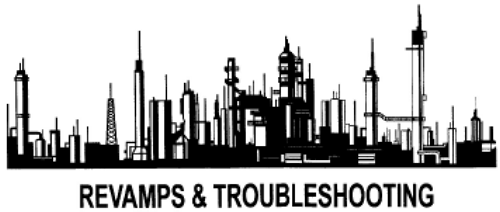|
|
PREFACE ............................................................................................... x
|
|
|
|
INTRODUCTION ................................................................................. xi |
|
|
|
SECTION I - TROUBLESHOOTING AT THE WELL SITE |
|
|
|
1
|
Increasing Gas Flow At the Wellhead ................................................... 1
|
|
|
Configuration of Tubing and Casing. Wellhead Performance Curve. Liquid Loading. Sustaining Gas Flow. Use of Intermitters. Sand Covering Perforations. Tagging Bottoms.
|
|
2
|
Additional Ideas To Enhance Gas Flow ............................................... 16
|
|
|
Calculating Gas Flow At Different Wellhead Pressures. Coning Water Into A Well. Dual Completion Wells. Gas Recovery During Initial Flaring. Portable Sand Separator. Soap Sticks.
|
|
3
|
Wellhead Surface Equipment ............................................................... 25
|
|
|
The Wellhead Tree. The Master And Secondary Valves. Casing Pressure. Heater Operation. High Pressure Separator. Three Phase Separator Condensate and Brine Tanks. Wellhead Flash Gas Recovery.
|
|
4
|
Wellhead Compression ......................................................................... 36
|
|
|
Head-End/Crank-End Operation. Optimizing Suction Pressure. Horsepower Bottlenecks. Rod load Limits. Fuel Saving Ideas. Field Troubleshooting Checklist.
|
|
5
|
Process Cooling In Remote Locations ................................................ 49
|
|
|
Heat Transfer Efficiency For Gas Cooling. Insufficient Air Flow. Fan Tip Speed. Blade Pitch. Effect Of Glycol Dehydrators. Turbocharger Discharge Coolers.
|
|
|
|
SECTION II - TROUBLESHOOTING AT THE DEHYDRATION AND COMPRESSION STATION |
|
|
|
6
|
Glycol Dehydration ............................................................................... 59
|
|
|
Glycol Pump. Reduced Glycol Circulation. Regeneration Temperature. Flooding Dehydration Tower. Plugged Trays. Effect of Temperature and Pressure. Selecting Dehydration Trays. Overheating Glycol. External Glycol Stripper. Di-, Tri-, or Tetra-Glycol?
|
|
7
|
Reciprocating Compressors ................................................................. 80
|
|
|
Lost Compressor Horsepower. Unloader Failures. Cylinder Temperature. Beta Scans and the Carnot Cycle. Efficiency. Starting Volumetric Clearance. Valve Losses. Excessive Rod Loading.
|
|
8
|
Reciprocating Engines .......................................................................... 90
|
|
|
Cylinder Exhaust Temperature. Vibration Analyzer. Turbochargers. Beta Scans And The Otto Cycle. Engine Efficiency.
|
|
9
|
Loss In Centrifugal Compressor Capacity ........................................ 100
|
|
|
Compression Horsepower versus delta T. Labyrinth Seal Leakage. Rotor Fouling. Split Shaft Gas Turbine Drive. Salt Deposits. Dew Point Solid Deposits. Anti-Surge Control.
|
|
10
|
Gas Turbine Driven Centrifugal Compressors ................................. 112
|
|
|
Exhaust Temperature Limits. Compressor versus Gas Properties. Rotor Fouling. Driver Efficiency.
|
|
11
|
Light Hydrocarbon Distillation .......................................................... 120
|
|
|
Control Problems. Flooding. Tower Delta P. Liquid Level Causes Flooding. Temperature Survey. Foaming. Expanding Tray Capacity and Efficiency. Tray Damage.
|
|
12
|
Amine Regeneration and Scrubbing .................................................. 133
|
|
|
Dirty Amine. Foaming. Corrosion Inhibitors, Reboiler and Condenser Corrosion. Reclaimer Operation for MEA. Filter Operation. Amine Strength. Retrofitting Ideas To Expand Capacity. Energy Savings.
|
|
13
|
Sulfur Plant Operation ........................................................................ 148
|
|
|
Sulfur Losses. Air Ratio. Catalyst Activity Reheat Exchangers. Sulfur Fog. Start-Up Problems. Deposits On Catalyst Beds. Condenser Leaks. Plugged Seal Legs. Oxygen Enrichment. Cascading Seal Legs.
|
|
|
|
SECTION III - PIPELINE PROBLEMS |
|
|
|
14
|
Hydrates .............................................................................................. 172
|
|
|
Effect of Composition And Pressure. Cooling On Expansion. Use Of Methanol. Effect On Wellhead Compressors.
|
|
15
|
Production Metering ........................................................................... 180
|
|
|
Pulsation Effects. Effect of Wellhead Compressors. Eroded, Plugged Orifices. Beta Ratio. Gas Field Balances. Custody Transfer Point.
|
|
16
|
Piping Pulsations ................................................................................. 188
|
|
|
Running Compressors in Parallel. Resonant Piping Length. Pulsation Dampener Bottle. Effect Of Piping Design.
|
|
17
|
Corrosion and Fouling ........................................................................ 192
|
|
|
Monitoring Internal Corrosion. External Pipeline Corrosion. Pipe-to-Soil Potential. Biological Corrosion.
|
|
|
|
|
GLOSSARY ........................................................................................ 195
|
|
|
|
|
INDEX ................................................................................................ 203
|


